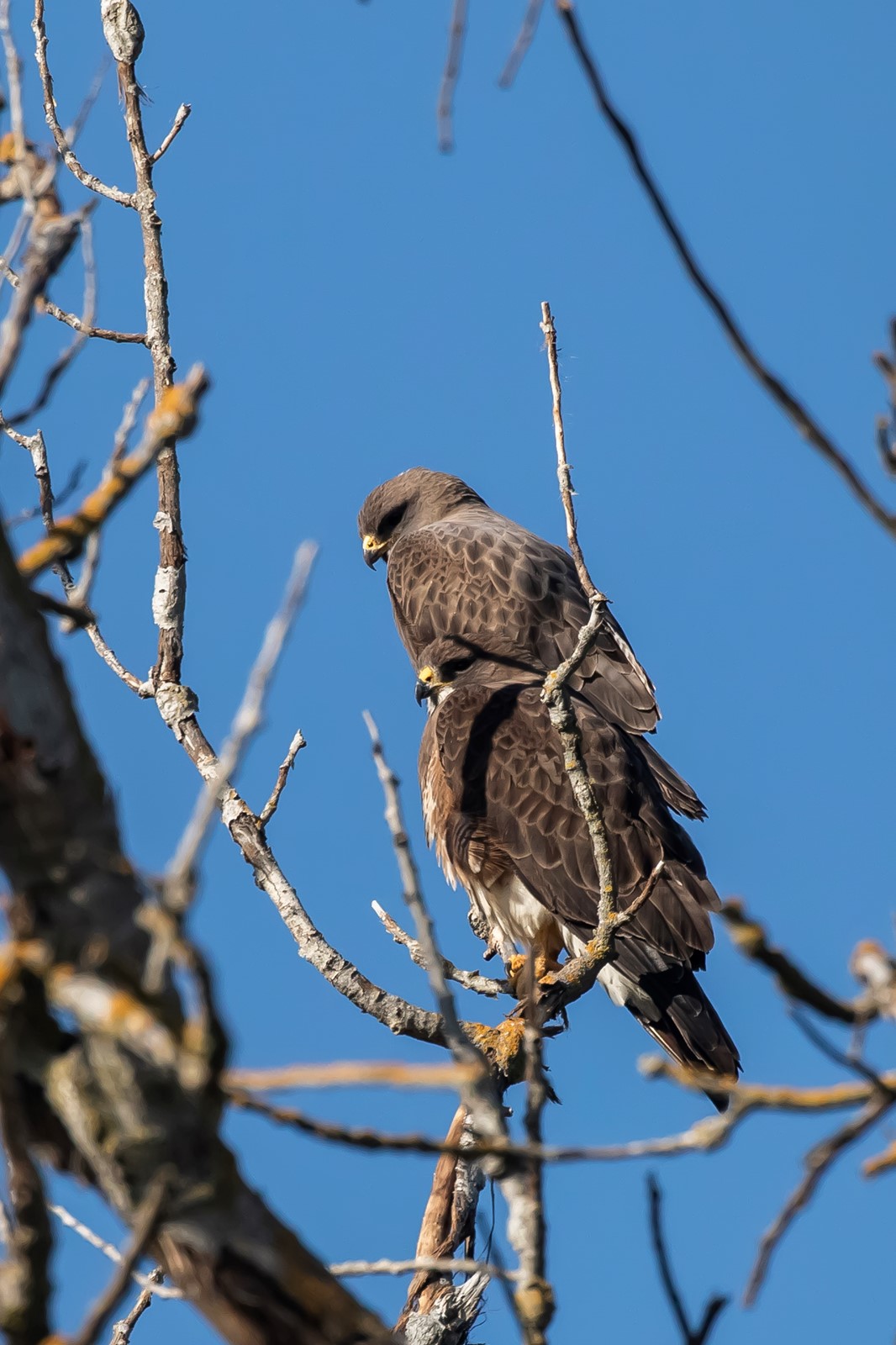
Despite the high summer temperatures that claimed dozens of chicks at the Cache Creek Nature Preserve, 2023 has been a good year for breeding birds.
Among the 12 species of birds regularly monitored at the Preserve, according to a new study by biologist Felicia Wang, eight of the 12 species of birds that “are great indicators of the health of riparian habitats in California’s Central Valley” were doing well.
These bird surveys are conducted during the nesting season at the Preserve, from mid-April to the end of May. The high temperatures hit the region beginning in July and went into August, causing a number of nestlings to die within boxes where temperatures climbed to over 100 degrees for days on end.
“Survey teams” took special notice of the presence, abundance and breeding of the 12 species and found that the Ash-throated Flycatcher, Black-headed Grosbeak, Common Yellowthroat, Nuttall’s Woodpecker, Song Sparrow, Spotted Towhee, Yellow Warbler and Swainson’s Hawk were doing well. The other species which didn’t have a robust breeding season were the Lazuli Bunting, Least Bell’s Vireo, Yellow-breasted Chat and Yellow-billed Cuckoo.
Overall, according to Wang’s study, there were 22 confirmed breeding species in the 2023 nesting season, “the largest confirmed number in the Conservancy’s records!” she stated.
The nest box monitoring program data shows that more eggs were laid and more fledglings left the boxes in 2023.
The birds that use those boxes are Wood Ducks and cavity-nesting songbirds like Tree Swallow, Western Bluebird, and Ash-throated Flycatcher.
The “Tree Swallow, by far, was our most popular nest box occupant. The wildlife game cameras allowed staff to record baby chicks from more skittish birds like California Quail and Wild Turkey.”
While summertime heat deaths were high among chicks in the bird boxes, who couldn’t escape the 100-plus degree days, “All in all, 2023 was a good year for breeding at the Cache Creek Nature Preserve,” Wang reported. “This may be due to the plentiful water in the creek and wetlands this year.”
The new Yolo County ordinance prohibiting Off-Highway Vehicles in the creek bed probably also played a role,” she stated because there was a lot less trash than in previous years, which could also mean a lot fewer people, which would put less pressure on nesting birds.
In her study, Wang noted the “species richness” depended on where the counts were being done in the 130-acre Preserve.
This year, eight count stations, situated at least 200 meters apart, were established in the riparian habitats and corridors of the Nature Preserve.
“Counting stations” higher values can be seen as “hotspots” while stations with lower values could be considered for additional environmental enhancement.
While there were no significant differences between stations, though, especially in diversity of species, there were slightly lower counts of abundance in the southern stations. These stations are closer to the creek and are thriving with dense foliage, so no enhancements are needed.
“The dense foliage means surveyors had to rely on bird sounds to make their counts; a more difficult way to confirm numbers,” Wang stated. “Also, many of the types of birds at those stations are more elusive and do not call if they sense danger. Examples are Wilson’s Warbler, Townsend’s Warbler and Swainson’s Thrush.”
Biologists at the Conservancy have done a few bird count surveys over the years. The first survey was take in 1999, the year the Nature Preserve was established. Since then, a survey was performed in 2011 and then last year in 2022.
Avian Point Count Surveys are one of the most efficient and effective ways to gauge the success of restoration efforts at the Cache Creek Nature Preserve, Wang stated.


 PREVIOUS ARTICLE
PREVIOUS ARTICLE
